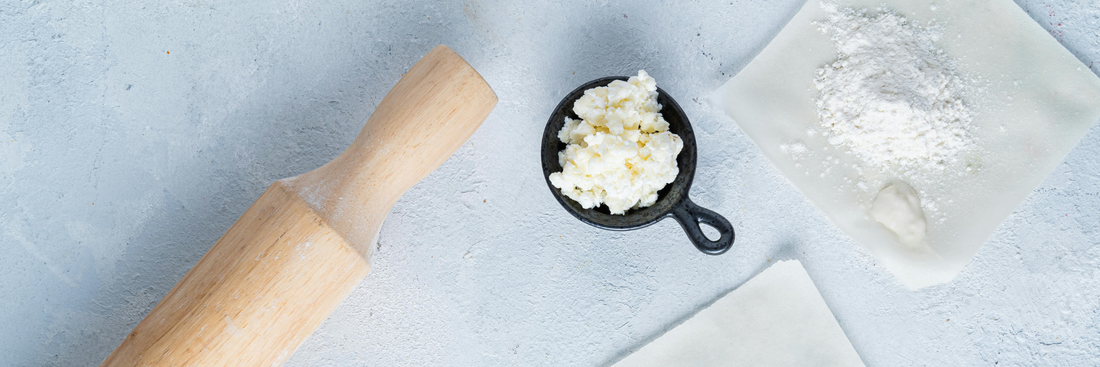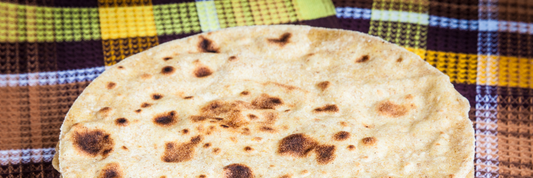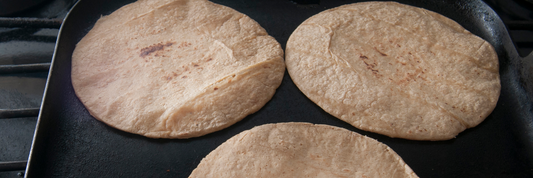Learn How to Make Homemade Cottage Cheese with simple steps using fresh milk. Discover its mild, tangy flavor, high protein benefits, and versatile uses in both sweet and savory dishes. A complete guide for home cooks and health enthusiasts.
- Types of Cottage Cheese: A Complete Guide for Eco-Friendly Food Lovers
- Pasta Recipes with Cottage Cheese: High‑Protein, Easy & Eco‑Friendly
- Low-Fat Cottage Cheese Guide: Benefits, Uses & Eco Storage
What Is Cottage Cheese?
Cottage cheese is a fresh, soft cheese produced by curdling milk, typically cow’s milk, through the addition of an acid or bacterial culture. Unlike aged cheeses, which undergo fermentation and ripening to develop complex flavors and firm textures, cottage cheese remains fresh and delicate, offering a mild, slightly tangy taste that appeals to a wide range of palates.
At its core, cottage cheese consists of curds solid milk proteins separated from the liquid whey which are gently washed and often mixed with a creamy dressing made from milk or cream. This process results in a distinctive texture that is both creamy and curdy, with the size and firmness of the curds varying depending on the method of production and moisture content. Some varieties feature larger, softer curds with higher moisture, while others have smaller, drier curds that give a more crumbly mouthfeel.

What Does Cottage Cheese Taste Like?
Cottage cheese is renowned for its mild, slightly tangy, and fresh flavor, which makes it an appealing and adaptable ingredient in a variety of culinary contexts. Unlike stronger, aged cheeses such as cheddar or blue cheese, cottage cheese offers a gentle and approachable taste that complements a wide range of dishes without overpowering other flavors. Its subtle tang comes from the lactic acid produced naturally during the curdling process, adding a refreshing brightness that enhances both sweet and savory pairings.
Read more: What does cottage cheese taste like?
One of the most interesting aspects of cottage cheese is how its taste and texture can vary significantly depending on its fat content and curd size, allowing consumers to select varieties that suit their personal preference or dietary needs.
- Fat Content Influence: Cottage cheese ranges from nonfat and low-fat options up to full-fat varieties. Higher-fat versions tend to have a richer, creamier taste and texture. The fat adds a smooth mouthfeel that can intensify the cheese’s natural sweetness and mellow out its tanginess. Conversely, nonfat or low-fat cottage cheese varieties often taste lighter and sometimes tangier, giving a cleaner, more refreshing flavor at the expense of richness.
- Curd Size Effect: The curds are the signature lumpy component of cottage cheese, and their size directly affects the perceived texture and flavor concentration.
- Small-curd cottage cheese features tiny, soft curds suspended in a creamy base. This produces a smoother, more uniform consistency and a milder flavor profile. The small curds tend to blend well in recipes that require smoother textures, such as dips, spreads, or desserts.
- Large-curd cottage cheese contains bigger, more distinct curds that provide a noticeable bite and a more pronounced tang. The larger curds have a slightly firmer texture and can contribute a satisfying, hearty element to salads, bowls, or as a standalone snack.
Comparing cottage cheese to other fresh cheeses helps to clarify its unique flavor and texture nuances:
- Ricotta Cheese: Ricotta has a sweeter and less tangy profile than cottage cheese, with a very soft, fine-grained, and fluffy texture. It is often creamier but lacks the characteristic lumps of cottage cheese. Ricotta’s flavor is neutral enough to be used extensively in desserts and certain cooked dishes, where cottage cheese’s more assertive tang might be less desirable.
- Feta Cheese: Feta is markedly different sharper, saltier, and more pungent. It offers a crumbly yet firm texture that is much drier than cottage cheese. Feta’s bold taste often dominates dishes, whereas cottage cheese tends to blend harmoniously, adding protein and creaminess without overshadowing other flavors.
Understanding these distinctions highlights why cottage cheese holds a unique position as a fresh cheese that balances mildness with texture. Its light, fresh taste paired with a curdy yet creamy texture provides versatility unmatched by many other soft cheeses. Whether you prefer large, satisfying curds with a tangier impression or small, smooth curds with a gentle flavor, cottage cheese offers options tailored to your taste.
Related: Ricotta vs Cream Cheese - Which Is Better for Baking?
Texture Preferences: Small Curd vs. Large Curd
The choice between small-curd and large-curd cottage cheese often comes down to personal preference and intended use:
- Small-Curd Cottage Cheese: Favored by those who enjoy a more refined and creamy mouthfeel, small-curd cottage cheese is frequently chosen for dishes where a smooth texture is desired. For example, it blends seamlessly into smoothies, creamy dips, and baked goods. The mild flavor profile allows it to complement rather than compete with other ingredients.
- Large-Curd Cottage Cheese: Appreciated by individuals who like a more rustic and textured experience, large-curd cottage cheese offers distinct lumps that add body and bite to salads, grain bowls, and snacks. The slightly tangier taste can add a refreshing contrast to sweet fruits or spicy seasonings.
How to Make Homemade Cottage Cheese
Making homemade cottage cheese is a gratifying kitchen project that lets you enjoy ultra-fresh, customizable cheese with minimal ingredients. This process is perfect for those who appreciate wholesome, homemade foods, want control over quality, or simply enjoy experimenting with textures and flavors. With basic pantry staples milk, an acid like vinegar or lemon juice, salt, and optional cream you can craft your own batch of cottage cheese tailored to your preference.
Ingredients
- Milk: Whole milk is classic for a rich texture, but you can use low-fat or skim depending on your dietary goals.
- Acid: White vinegar or fresh lemon juice works as the curdling agent. The acid separates milk solids (curds) from liquid (whey).
- Salt: Enhances flavor; adjust to taste.
- Cream (optional): Adds richness and improves mouthfeel, especially if you prefer a creamier cheese.
Detailed Step-by-Step Process
- Heat the Milk Slowly and Evenly
Begin by pouring your chosen milk into a large, heavy-bottomed saucepan to prevent scorching. Heat the milk over medium heat, stirring occasionally, until it reaches about 80–90°C (175–195°F). This is warm enough to promote curdling but not so hot as to denature the proteins unevenly. Heating the milk slowly helps the curds form properly and results in a better texture. - Add the Acid to Curdle the Milk
Remove the saucepan from the heat and gradually add the vinegar or lemon juice while gently stirring. You’ll notice the milk almost immediately begin to separate into white curds and a clear, slightly yellowish liquid whey. Let it rest undisturbed for 10–15 minutes to ensure full curd formation. The timing and amount of acid affect how firm or loose the curds become, giving you a subtle tool to customize texture and taste. - Strain the Curds from Whey
Prepare a large sieve or colander lined with cheesecloth, a clean kitchen towel, or reusable paper bowls or kraft paper boxes for an eco-friendly option. Pour the curdled milk mixture over the strainer and allow the whey to drain away naturally. Reusable paper or kraft containers are especially useful because they are breathable yet sturdy, facilitating effective drainage while being biodegradable and sustainable. - Rinse the Curds Thoroughly
Once strained, rinse the curds under cold running water. This step washes away any remaining acidity, reduces sourness, and cools the curds, which helps to firm them up slightly and improve the final mouthfeel. Rinsing also prevents the curds from sticking together excessively, preserving their characteristic lumpy texture. - Press and Drain Excess Water
After rinsing, allow the curds to drain until most of the moisture is removed but the cheese remains moist. You can gather the cheesecloth or paper container edges and gently press to speed up drainage. The amount of moisture left in the curds will determine the cheese’s creaminess and firmness an important factor in tailoring the final product to your liking. - Salt and Add Cream for Flavor and Texture Enhancement
Transfer the drained curds into a mixing bowl and add salt according to your taste preference. Salt balances the mild tang of the cheese and enhances overall flavor. For a richer, more indulgent cottage cheese, stir in a small amount of cream or whole milk, which creates a luscious, creamy texture that many find irresistible. - Storage and Serving Tips
Put your homemade cottage cheese into an airtight container and refrigerate. It’s best consumed within 3-5 days for peak freshness and flavor. Serve chilled on its own, topped with fresh fruit or herbs, or use in recipes that call for cottage cheese. When storing, consider using breathable containers or natural materials like kraft paper to maintain texture and reduce condensation.

How Is Cottage Cheese Made? (Commercial vs Homemade)
The production of cottage cheese can vary significantly depending on whether it’s made commercially or at home. Both methods share the basic principle of curdling milk to separate curds from whey, but the processes differ in scale, precision, and equipment, resulting in some distinctions in texture, flavor, and environmental impact.
Commercial Cottage Cheese Production
In commercial settings, cottage cheese is produced using highly controlled processes designed to ensure consistency, safety, and efficiency:
- Pasteurization: The milk is first pasteurized heated to a precise temperature to kill any harmful bacteria and extend shelf life. This step guarantees a safe product by eliminating pathogens without compromising the milk’s proteins excessively.
- Starter Cultures and Rennet: Unlike the simple acid-curdling method often used at home, commercial producers introduce carefully selected bacterial cultures and sometimes rennet (an enzyme) to coagulate the milk. These cultures begin fermenting lactose into lactic acid in a controlled way, producing consistent curd formation and flavor.
- Machine Curdling: Specialized equipment is used to cut and separate the curds from the whey quickly and uniformly. This mechanization ensures uniform curd size and texture throughout the batch.
- Washing and Packaging: After curd formation, the curds are washed to remove residual acidity, then salted and mixed with a cream dressing or other additives depending on the desired product style. Finally, the cottage cheese is packaged into food-safe plastic containers designed for preservation and transport.
The commercial process emphasizes product safety, standardization, and longevity, making cottage cheese widely available year-round with predictable quality.
Homemade Cottage Cheese Production
In contrast, homemade cottage cheese uses a more traditional, simpler approach that emphasizes freshness and control over ingredients:
- Natural Acid Curdling: Homemade recipes typically rely on natural acids like vinegar or lemon juice to curdle warm milk. This gentle, hands-on process forms curds without the need for specialized bacterial cultures or enzymes.
- No Pasteurization Required (if using pasteurized milk): Many home cooks use pre-pasteurized milk to eliminate pathogens, so additional pasteurization is not necessary. The acid method naturally separates curds and whey without complex equipment.
- Manual Straining and Rinsing: After curdling, the curds are manually separated from the whey using strainers, cheesecloth, or eco-friendly alternatives such as reusable kraft paper bowls or compostable paper containers. These materials allow effective drainage while aligning with sustainable kitchen practices.
- Customization and Storage: Homemade cottage cheese can be salted, creamed, and adjusted for texture according to personal preference. Importantly, storing homemade dairy in compostable, food-safe containers like kraft paper promotes sustainability by reducing reliance on single-use plastic packaging common in commercial products.
Sustainability Highlight: Reducing Plastic Waste
A key advantage of the homemade method is the opportunity to embrace environmentally responsible storage solutions that minimize plastic waste. While commercial products are typically packaged in disposable plastic tubs, home cooks can:
- Use reusable paper bowls or kraft paper boxes for straining and storing cottage cheese.
- Opt for glass jars or stainless steel containers for refrigeration, which are durable and plastic-free.
- Compost biodegradable packaging materials after use, closing the loop on food waste and container disposal.
Choosing these alternatives supports reducing pollution and the environmental footprint associated with dairy consumption.
How to Store Cottage Cheese
Proper storage is essential to maintain the fresh taste, texture, and safety of cottage cheese, whether homemade or store-bought. Given its high moisture content and delicate nature, cottage cheese requires careful handling to prevent spoilage and preserve quality.
Read more: How To Store Cottage Cheese?
Best Practices for Storing Cottage Cheese
- Refrigerate at Optimal Temperature:
Always store cottage cheese in the refrigerator at or below 4°C (40°F). Consistent cold temperatures slow bacterial growth and keep the cheese fresh longer. Avoid leaving cottage cheese out at room temperature for extended periods, as this can increase the risk of spoilage. - Use Airtight, Food-Safe Containers:
Whether you’re storing homemade or store-bought cottage cheese, transfer it to or keep it in airtight containers to minimize exposure to air and contaminants. Airtight sealing also helps retain moisture and prevents the cheese from absorbing odors from other foods in the fridge. - Portion Control with Disposable or Reusable Paper Cups/Bowls:
To reduce food waste and maintain freshness, consider dividing cottage cheese into smaller portion-sized containers such as paper cups or bowls. This way, you only open what you need at a time, keeping the rest sealed and untouched. Using compostable or reusable paper containers aligns with sustainable kitchen practices by minimizing reliance on single-use plastics. - Clean Utensils:
Always use clean spoons or utensils when scooping cottage cheese to avoid introducing bacteria that can cause faster spoilage.

Shelf Life Guidelines
- Homemade Cottage Cheese:
Because it lacks preservatives and commercial pasteurization controls, homemade cottage cheese is best consumed within 5 to 7 days when properly refrigerated. Its freshness is greatly impacted by hygiene during preparation and storage, so maintaining clean conditions is crucial. - Store-Bought Cottage Cheese:
Follow the manufacturer's expiration or “best before” date on the label, which generally reflects safety and quality under unopened conditions. Once opened, store-bought cottage cheese should ideally be consumed within 7 days. Keeping the container tightly sealed after each use helps maximize this shelf life.
FAQs About Cottage Cheese
Q1: Is Cottage Cheese Healthy?
Yes, cottage cheese is widely regarded as a healthy food choice, particularly for those focused on balanced nutrition. It is high in protein, offering around 11–14 grams per half-cup serving depending on the brand and fat content, which supports muscle repair and satiety. Low-fat and nonfat versions are popular among people aiming to reduce calorie and fat intake without sacrificing protein. Cottage cheese also delivers important micronutrients, such as calcium, essential for strong bones and teeth, and B vitamins (including riboflavin and vitamin B12) that play crucial roles in energy metabolism and nervous system health. The combination of macronutrients and micronutrients, along with its relatively low calorie density, makes cottage cheese a staple in many health-conscious diets, including weight management, bodybuilding, and diabetic meal plans.
Q2: Can You Freeze Cottage Cheese?
Freezing cottage cheese is possible but comes with caveats. The freezing process tends to alter the texture once thawed, cottage cheese often becomes grainy and watery, losing its original creamy, curdy integrity. This change results from ice crystal formation disrupting the delicate structure of the curds. Therefore, freezing is generally not recommended if you plan to eat it fresh, but it is perfectly suitable when the cottage cheese will be cooked or baked. In recipes such as casseroles, pancakes, lasagnas, or baked goods, the change in texture is less noticeable. To freeze, place cottage cheese in an airtight, freezer-safe container, and consume within 1 to 2 months for the best quality.
Q3: Is It OK to Eat Cottage Cheese Past Expiration?
Consuming cottage cheese past its expiration date requires careful judgment and depends on storage conditions:
- If the container is unopened and has been consistently refrigerated, cottage cheese might remain safe to eat for up to one or two weeks past the printed date. However, this is not guaranteed, and sensory checks are critical.
- If the container is opened, the safe window shortens significantly. Always inspect cottage cheese visually and by smell before consumption.
- Smell: Fresh cottage cheese has a mild, slightly tangy aroma. Any sour, rancid, or ammonia-like smells indicate spoilage.
- Texture: Excessive watery separation is normal, but sliminess or clumping may signal bacterial overgrowth.
- Appearance: Look for discoloration or mold growth, which should prompt immediate disposal.
When in doubt, it’s safer to err on the side of caution and discard cottage cheese that seems off to avoid the risk of foodborne illness.
Q4: What Can I Eat with Cottage Cheese?
Cottage cheese’s mild flavor and creamy yet slightly tangy profile allow it to pair extremely well with a diverse range of foods, making it a versatile ingredient for both sweet and savory combinations:
- Sweet pairings: Fresh fruits like berries, peaches, pineapple, or melon amplify cottage cheese’s natural creaminess and add refreshing sweetness. Dried fruits such as raisins or cranberries add chewy texture and concentrated sweetness. A sprinkle of granola provides crunch, while a drizzle of honey or maple syrup enhances flavor complexity for a wholesome breakfast or snack.
- Savory options: Fresh herbs like chives, dill, or parsley brighten cottage cheese with herbal notes. Sliced or chopped vegetables cucumbers, cherry tomatoes, radishes, or bell peppers add crispness and nutrients. Whole-grain crackers or toasted bread provide a satisfying crunch for a balanced snack. Additionally, cottage cheese pairs well with spices like black pepper, paprika, or za’atar for a flavorful twist, and it can be incorporated into salads, baked dishes, or savory bowls.
This adaptability across sweet and savory realms contributes to cottage cheese’s lasting popularity among health-conscious eaters and home cooks, enhancing breakfasts, lunches, snacks, and even dinner.
Conclusion:
Cottage cheese is more than just a fresh cheese it's a nutritious, protein-rich addition that can seamlessly fit into a variety of diets and cuisines. Its mild, slightly tangy flavor and adaptable texture from smooth small curds to chunkier large curds make it perfect for countless culinary uses. Whether you choose store-bought or decide to create your own homemade version, understanding how cottage cheese is made, stored, and enjoyed empowers you to get the fullest benefit from it. With its impressive nutritional profile and natural versatility, cottage cheese deserves a regular place in your kitchen pantry and on your table. Embrace this wholesome cheese to enhance your meals with both flavor and nourishment.







